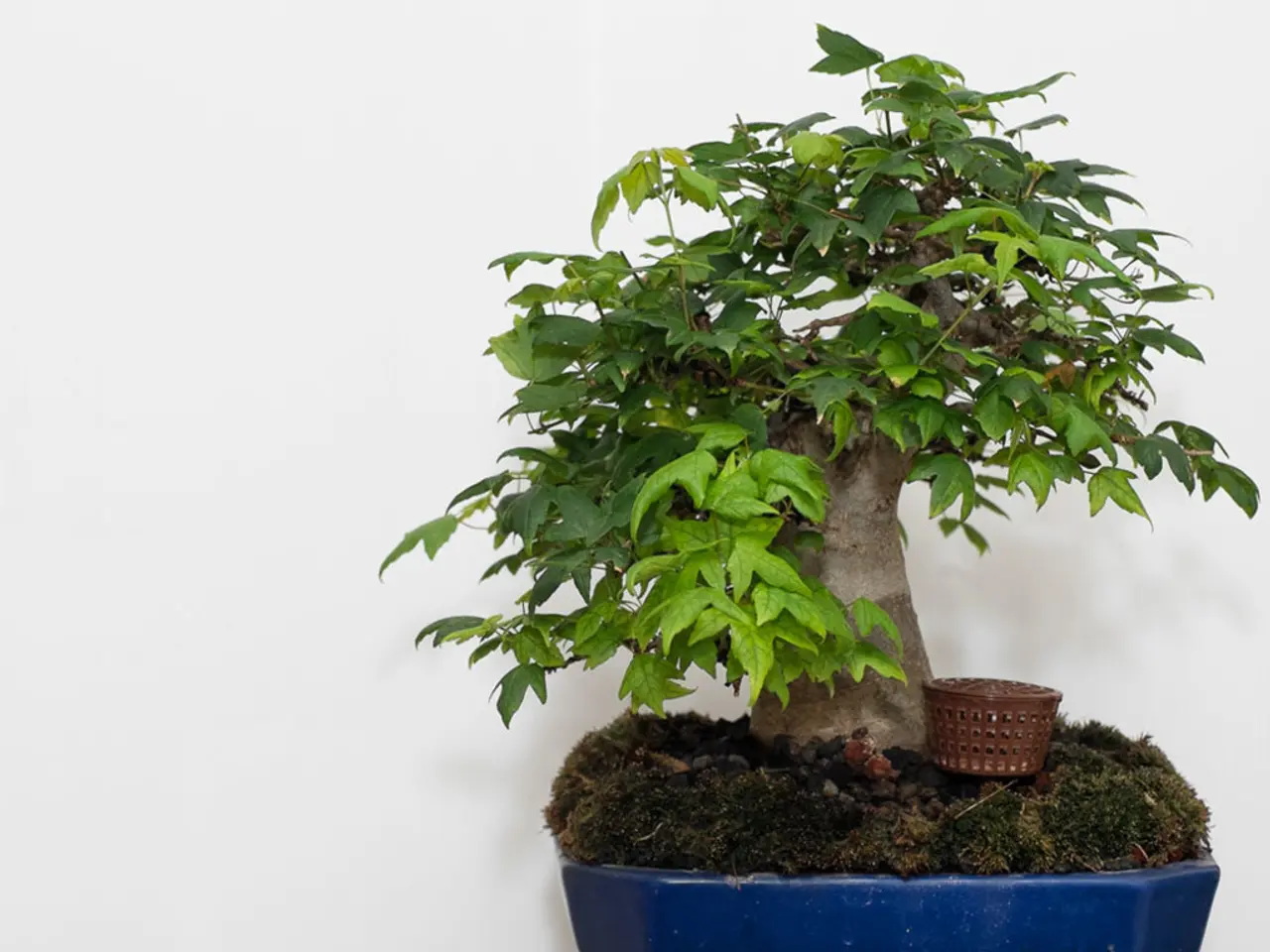Bonsai Trees Stuck in Sticky Resin: Identifying Causes and Providing Remedies
Sticky sap on bonsai trees is a common issue that can be caused by sap-sucking pests, such as whiteflies and scale insects. These pests feed on the plant's sap and excrete a sugary substance called honeydew, which forms a sticky coating on the leaves and stems. This honeydew can lead to secondary issues like sooty mold fungus growth, which can impair the plant's photosynthesis.
Causes
Whiteflies and scale insects are the primary culprits behind sticky sap on bonsai trees. Whiteflies feed on the plant's sap and release honeydew, causing a sticky residue and potential leaf discoloration or dropping due to metabolic imbalance. Scale insects, armored with a protective shell, insert their piercing mouthparts into plant tissue, siphoning sap and excreting honeydew, leaving sticky deposits on the plant and nearby surfaces.
It's worth noting that other causes unrelated to pests can include processes like guttation, where the plant exudes sap due to moisture conditions, but this sap is usually less sticky and more normal in bonsai species like Money Trees.
Effective Management
Managing sticky sap on bonsai trees requires a combination of physical cleaning, targeted insecticide use, and good cultural practices to keep pests under control and prevent recurrence.
Physical removal is one approach. Gently wiping away insects like scale with a soft cloth dipped in warm soapy water can help reduce their population. Insecticidal treatments, such as neem oil or insecticidal soap sprays, can be used to target whiteflies and scale. Repeat treatment after 10 days to control any remaining pests.
Cultural care plays a crucial role in reducing pest attraction and supporting plant health, which can limit infestation severity. Improving watering practices and overall bonsai care can help create a less inviting environment for pests.
Prevention is key, and regular inspections for early signs of pests are essential. Treat any detected pests promptly to prevent honeydew buildup and mold growth.
Maintaining a Healthy Bonsai
Regular bonsai maintenance, such as monitoring for pests, fertilizing, and watering, is vital for preventing sap-related issues and fostering a resilient, vibrant tree. However, it's important to note that using dish soap on your bonsai can be catastrophic, stripping its delicate foliage of essential oils and causing irreparable harm.
In summary, managing sticky sap on bonsai trees involves understanding the causes, employing effective strategies for prevention and control, and maintaining a consistent approach to bonsai care to ensure a healthy, thriving tree.
Maintaining a healthy home-and-garden lifestyle, specifically focusing on the well-being of bonsai trees, requires regular gardening efforts to address issues like sticky sap. This sap is often caused by sap-sucking pests, such as whiteflies and scale insects, which feed on the plant's sap and excrete honeydew, leading to a sticky coating on the leaves and stems.




